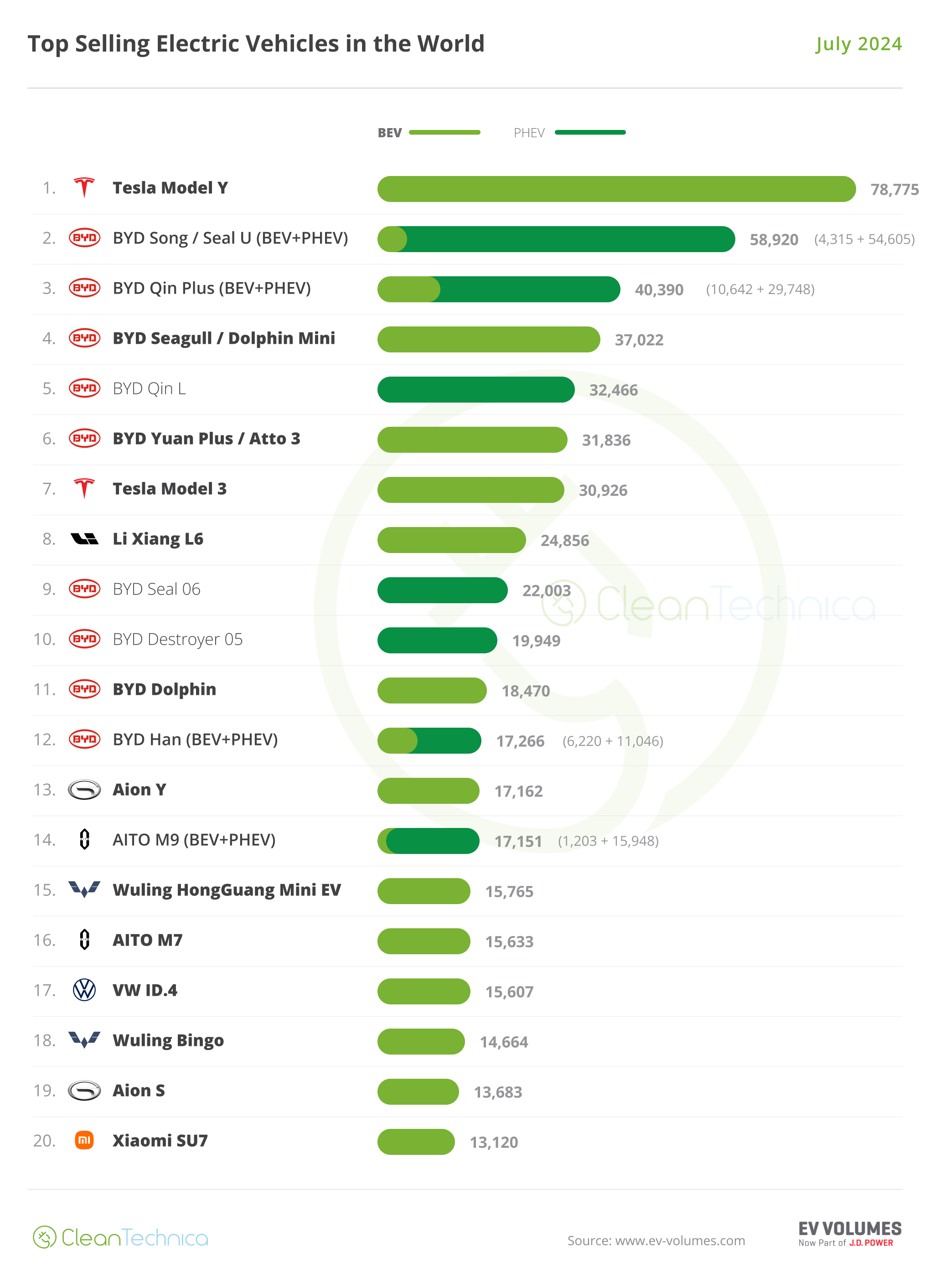Sign up for daily news updates from CleanTechnica on email. Or follow us on Google News!
The Federal Energy Regulatory Commission, commonly known as FERC, issued a sweeping new rule last week that does something so daring, so bold, and so eminently logical that it’s a wonder it didn’t happen sooner. The new rule requires local utilities and regional grid operators to do the unthinkable — namely, look beyond their own parochial interests to plan how the nation’s electrical grid should be structured in the future. The goal is to ensure there will be plenty of electrical energy available for those who want it when they need it.
Here is a 2-minute video by FERC Chairman Willie Phillips that gives a synopsis of what is in the 1300-page ruling and why the commission did what it did:
In a public information release, FERC said it acted to ensure the transmission grid can meet the nation’s growing demand for reliable electricity with a new rule that outlines how to plan and pay for facilities that regions of the country will need in order to power the American economy through the 21st century. The rule, known officially as Order No. 1920, marks the first time in more than a decade that FERC has addressed regional transmission policy, and the first time that it has squarely addressed the need for long-term transmission planning.
The grid rule adopts specific requirements for transmission providers to conduct long term planning for regional transmission facilities and determine how to pay for them. It reflects tens of thousands of pages of comments, filed over the course of the past three years, from hundreds of stakeholders representing all sectors of the electric power industry, advocacy groups, and state and other government entities.
FERC — Time To Seize The Moment
The rule requires transmission operators to conduct and periodically update long-term transmission planning over a 20-year time horizon to anticipate future needs. It also provides for cost effective expansion of transmission infrastructure that is being replaced. And it expressly provides for the role of states in the process of planning, selecting, and determining how to pay for transmission lines.
“We need to seize this moment,” Chairman Phillips said. “Over the last dozen years, FERC has worked on five after-action reports on lessons learned from extreme weather events that caused outages that cost hundreds of lives and millions of dollars. We must get beyond these after-action reports and start planning to maintain a reliable grid that powers our entire way of life. The grid cannot wait. Our communities cannot wait. Our nation cannot wait.”
Ari Peskoe, director of the Electricity Law Initiative at Harvard Law School, told Inside Climate News, “The problem [FERC] is trying to solve is insufficient investment in transmission.” Transmission lines are the superhighways of the grid, forming connections that allow power plants to deliver electricity across states and regions, ICN says. The need for additional lines has run up against the challenges of getting utilities, grid operators, and others to agree on which lines are needed, where they should go, and how the costs should be allocated.
FERC & The Regulatory State
“I think FERC was doing its best within the framework that it had created over the past two decades,” Peskoe said. What that remark hints at is that for the past 50 years, Congress has gladly passed its legislative function off on administrative agencies so its members don’t have to face angry voters back home. It gives them political cover, but it does something else as well. It makes those agencies targets of criticism about government overreach and sets the table for court challenges. In essence, it makes Congress little more than a bunch of puppets, preening for the cameras and doing the bidding of donors while they strut around Washington, D.C.
Right on cue, Mark Christie, the sole Republican on the commission, filed a 77-page dissent which ICN calls a primer on his party’s objections to using FERC as a force to nudge the country toward a cleaner grid. “The final rule should be seen for what it is — a pretext to enact, through administrative action, a sweeping legislative and policy agenda that Congress never passed,” he wrote. Expect the issue to wind up before the US Supreme Court, where two of its nine members are open and notorious supporters of the insurrection that gripped America in 2021. You can’t make this stuff up. Congress can’t agree the sun rises in the East, and yet the magalomaniacs want to use that to their advantage to promote their fanatical fascist agenda.
Red State, Blue State
FERC must navigate the constraints of a market in which most utilities have monopolies in their service territories and tend to resist policies that would increase the flow of inexpensive electricity from other places. Some states have policies that favor the development of renewable energy. Colorado governor Jared Polis said after Order 1920 was published, “Colorado is a national leader in climate action and this new rule will build on the work we’ve done to support air quality, reduce pollution, and utilize cleaner, low-cost renewable energy. FERC and the Biden Administration share our commitment to protecting air quality and saving people money, and this rule reflects that. This is an important step in delivering a more reliable, cost-efficient and cleaner grid that cuts costs for consumers. I applaud this action.”
Many so-called red states are doing everything they can to prop up the oil and gas industry, which contributes so generously to their campaigns, by delaying the shift away from fossil fuels in any way they can. These clashing priorities make it difficult to design national policies. The situation is analogous to the fight over rights to the water in the Colorado River. Everyone is trying to protect their little piece of the pie and nobody is doing the heavy lifting to devise a long-term plan to make sure there is enough fresh water available in the Southwest portion of America.
The new rule requires utilities and other entities that operate transmission lines to participate in a regional planning process at least every five years to consider the need for new lines, looking ahead with a time horizon of at least 20 years. The “regional” part means that this planning needs to involve discussions that go beyond a single utility’s needs and territory. Proposed transmission lines would gain priority if they are located in places where there are bottlenecks because of a lack of available line capacity.
Grid-Enhancing Technologies
The planning process must consider the use of so-called “grid enhancing technologies” that can allow power line operators to deliver more electricity through a transmission line. Two of them have been the subject of recent CleanTechnica articles — the Heimdall “magic balls” that measure the actual temperature of the wires in real time, and replacing old wires with new ones that can handle greater loads, a process known as “reconductoring.” The success of the regional planning mandate will depend a lot on whether utilities, state regulators, and others take the opportunity to seriously assess their regions’ needs, Peskoe said.
He anticipates that the provision will be useful in places where the participants have a history of working together, such as in New England. He is less optimistic about places such as the Southeast, where some utilities have stood in the way of transmission development because they want to limit the flow of inexpensive electricity from outside of their territories. Despite his concern, consumer and clean energy advocates in the Southeast have applauded the rule. “FERC’s new Order 1920 is taking the first step to fixing our broken and Balkanized electric grid,” said Simon Mahan, executive director of the Southern Renewable Energy Association. “The new grid expansion rule requires long-term vision, reasonable planning assumptions, and cuts down the opportunities for intentional delay.”
The Edison Electric Institute, a trade group for utilities, was much less pleased. Phil Moeller, its vice president of regulatory affairs, said his group is “disappointed” that FERC chose not to include a provision that says utilities are first in line to be able to develop transmission projects within their territories, a reference to the ongoing debate over whether utilities have a “right of first refusal” to build transmission lines. Utilities would like to be able to build the lines without going through a competitive bidding process against other energy companies. A previous FERC order requires a bidding process for certain types of lines, but utilities have resisted that effort and are pushing for state laws that give utilities priority.
The Takeaway
Utilities and other entities that operate transmission lines will have about a year to file plans on how they intend to comply with Order 1920, but the benefits of the new planning process will likely not be evident until near the end of this decade. First, the inevitable court challenges will need to be dealt with before any of the benefits of the new rule are unlocked. “I think you’ll see the coalition of Republican-led states who challenge any rule from the Biden administration that has to do with environment or energy issues,” Peskoe said.
How unfortunate. The energy transition needs to happen as soon as possible, but the process of changing the U.S. energy system is slow and fraught with delays and pitfalls. Still, a requirement for regular long-term planning is eminently sensible. As Forrest Gump told us, “If you don’t know where you’re going, you’re not likely to end up there.” That’s really all FERC is trying to accomplish — set a goal and make a plan to achieve the goal. It makes perfect sense, which is why it will be vigorously opposed by many entrenched special interest groups.
Have a tip for CleanTechnica? Want to advertise? Want to suggest a guest for our CleanTech Talk podcast? Contact us here.
Latest CleanTechnica.TV Video
CleanTechnica uses affiliate links. See our policy here.





